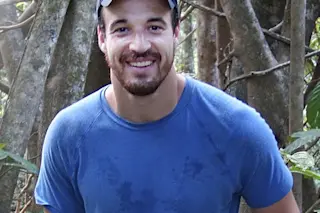The cassowary is one of the world's most dangerous birds.
A researcher investigating how the stress levels of people in non-industrialized societies differ from those of modern Americans found himself in a different kind of stressful situation when he came face-to-face with a killer.
Biological anthropologist Samuel Urlacher left the urban jungle of Boston, where he was a graduate student at Harvard University, for the actual jungle of Papua New Guinea. Since 2013, he’s worked among the Garisakang, an isolated clan of about 500 foragers and garden-scale farmers living in tropical villages without electricity or running water. Urlacher, now a postdoctoral fellow at Hunter College in New York, has collected more than 1,600 saliva samples in order to measure the stress hormone cortisol.
But sometimes, fieldwork has its surprises. Like the day Urlacher crossed paths with a cassowary, one of the world’s most dangerous birds. At least 5 feet tall ...















